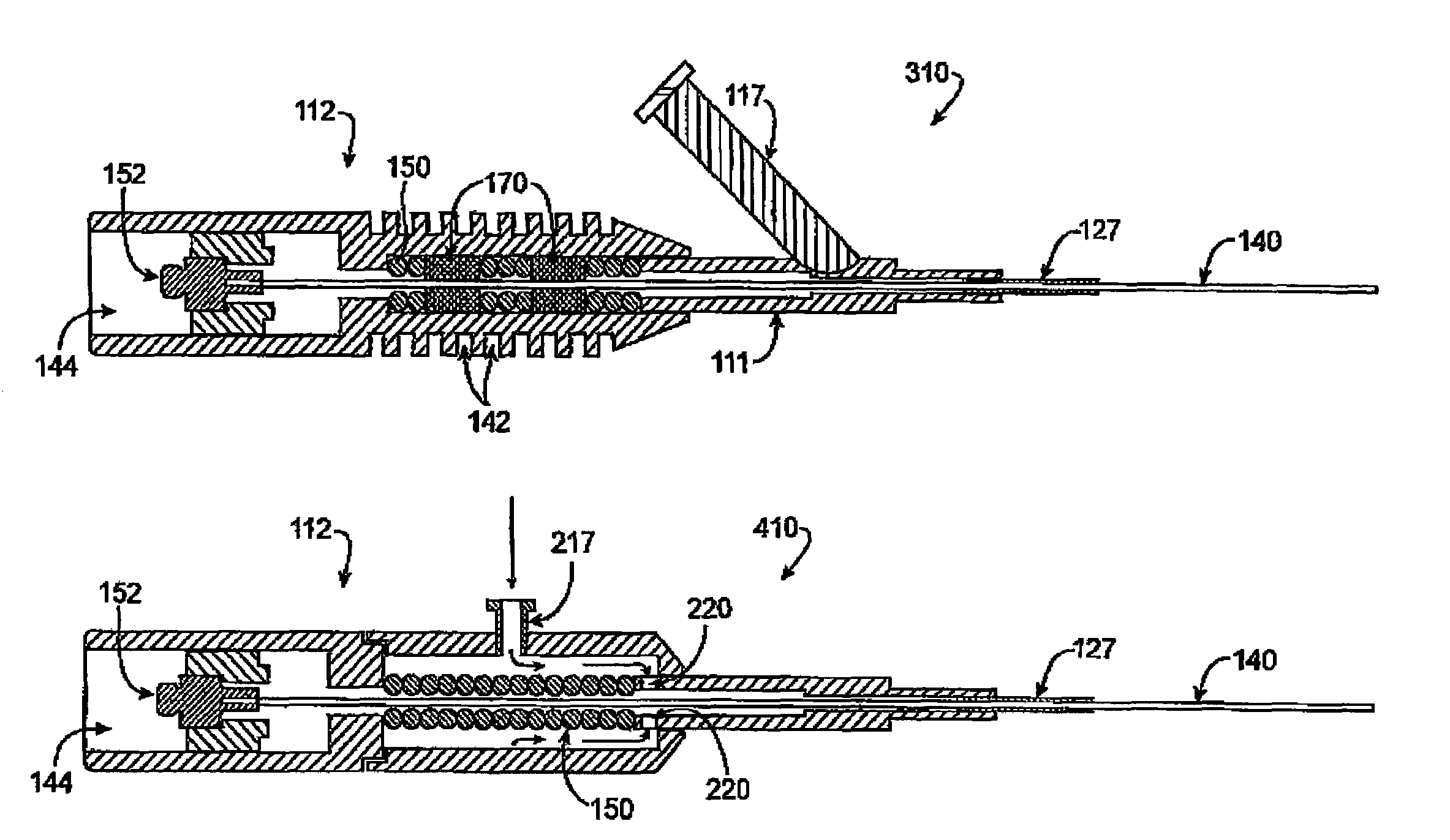Ultrasound catheter devices and methods
a catheter device and ultrasound technology, applied in the field of medical devices and methods, can solve the problems of shortening the useful life of the catheter device, reducing the efficacy of ultrasound ablation, and overheating anywhere along the length of the transmission wire, so as to reduce friction and dissipate hea
- Summary
- Abstract
- Description
- Claims
- Application Information
AI Technical Summary
Benefits of technology
Problems solved by technology
Method used
Image
Examples
Embodiment Construction
[0027]Ultrasound catheter devices and methods of the present invention provide for disruption of occlusions in blood vessels. Catheter devices generally include a catheter body, an ultrasound energy transmission member disposed within the catheter body and a distal head coupled with the energy transmission member and disposed at or near the distal end of the catheter body. The ultrasound transmission member transmits ultrasound energy from an ultrasound transducer to the distal head, causing the head to vibrate and, thus, disrupt vascular occlusions. A number of improved features of such ultrasound catheter devices are described more fully below.
[0028]Referring now to FIG. 1, one embodiment of an ultrasound catheter system 20 suitably includes an ultrasound catheter device 10 and an ultrasound generator 16. Catheter device 10 suitably includes a distal head 26 for disrupting occlusions, a catheter body 27, and a proximal end connector 12 for coupling catheter device 10 with an ultra...
PUM
 Login to View More
Login to View More Abstract
Description
Claims
Application Information
 Login to View More
Login to View More - R&D
- Intellectual Property
- Life Sciences
- Materials
- Tech Scout
- Unparalleled Data Quality
- Higher Quality Content
- 60% Fewer Hallucinations
Browse by: Latest US Patents, China's latest patents, Technical Efficacy Thesaurus, Application Domain, Technology Topic, Popular Technical Reports.
© 2025 PatSnap. All rights reserved.Legal|Privacy policy|Modern Slavery Act Transparency Statement|Sitemap|About US| Contact US: help@patsnap.com



